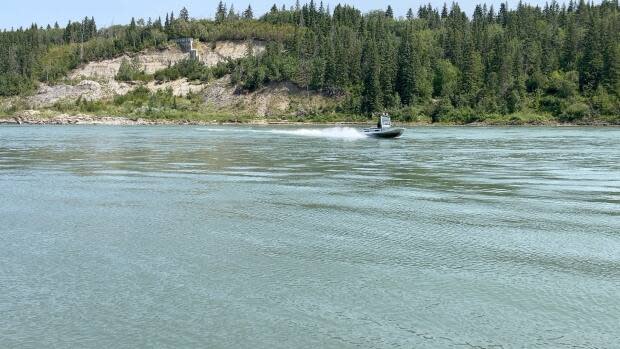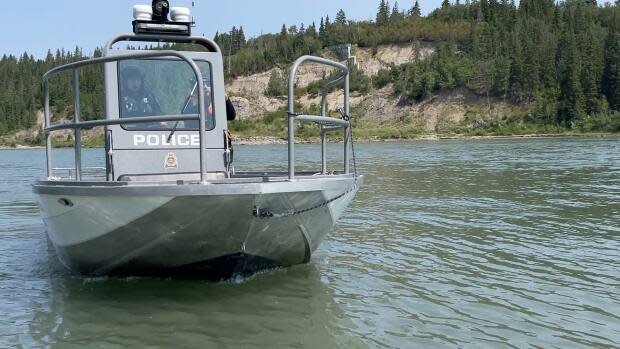Whether in a rubber dinghy or a speed boat, Albertans urged to be safe around the water

As a member of the Edmonton police marine unit, Sgt. Joe Spear spends his days patrolling a 75-kilometre stretch of the North Saskatchewan River.
Lately, he's noticed it's been getting crowded.
"COVID has created a huge increase of people throughout Canada using waterways — which is great, I'm not going to lie," Spear said.
The biggest increase is in what Spear calls "floaters" — people who are riding rubber dinghies or other inflatables down the river.
"An amazing trip," Spear said, "but what we're finding is a lot of people underestimate how long it takes to get there. And they don't understand that they're still supposed to — legally, they're required to — have certain pieces of safety equipment on board."
So far in 2021, Alberta RCMP have responded to 17 fatal drownings.
There are many first-timers getting out on Alberta's lakes and rivers. That lack of experience makes proper safety precautions even more critical, said RCMP Staff Sgt. Brian Meyer.
"It only takes a little bit of getting outside of your comfort zone or getting out of your abilities, factored in with anything in the environment, and bad things can happen," he said.

About 110 kilometres southwest of Edmonton, the volunteer fire department at South Pigeon Lake is dealing with a different type of inexperience — a lot of new boaters out on the lake.
"I've been doing water rescues out there for about 26 years and there's been a lot of things going on, that's for sure," said Fire Chief Wayne Benson.
According to Transport Canada, about 211,330 pleasure-craft licences have been issued nationwide since 2020, including 13,000 in Alberta.
"A lot of people have bought cabins out there and they're new at the boating industry," Benson said. "They're new at that whole game. And there's been an influx of an awful lot of people coming out."
Responding to a drowning call is always tragic, Benson said, but in a small town those calls bring extra anxiety.
"At our lake, a lot of us know a lot of the people there and — touch wood — we have not had that problem yet," Benson said.
"But we could very easily end up with a call of somebody that we know."
How to reduce the risk
The three first responders agree on the key steps to staying safe: proper equipment and having a plan.
Spear said that there is often a life-jacket on board but it's not being worn by anyone.
"If you've got your life-jackets on a seat, that's great. But when you get pitched forward and the life-jacket doesn't follow you, now you're in the water unexpectedly and with no way of preserving your life and keeping above water."
Added Benson: "Those life jackets are worth their weight in gold."
It's also common for adults to put life-jackets on the children but then not wear one themselves, Meyer said. "The water doesn't care how old you are."
Putting together a proper plans means informing loved ones of where your going and how long you'll be, knowing the swimming strength of everyone in your group and having a buddy.
"I love the river valley here," says Shear. "The waterways are way underutilized and it's an amazing river valley and I would love people to be out there. We just want to be doing it safely."

